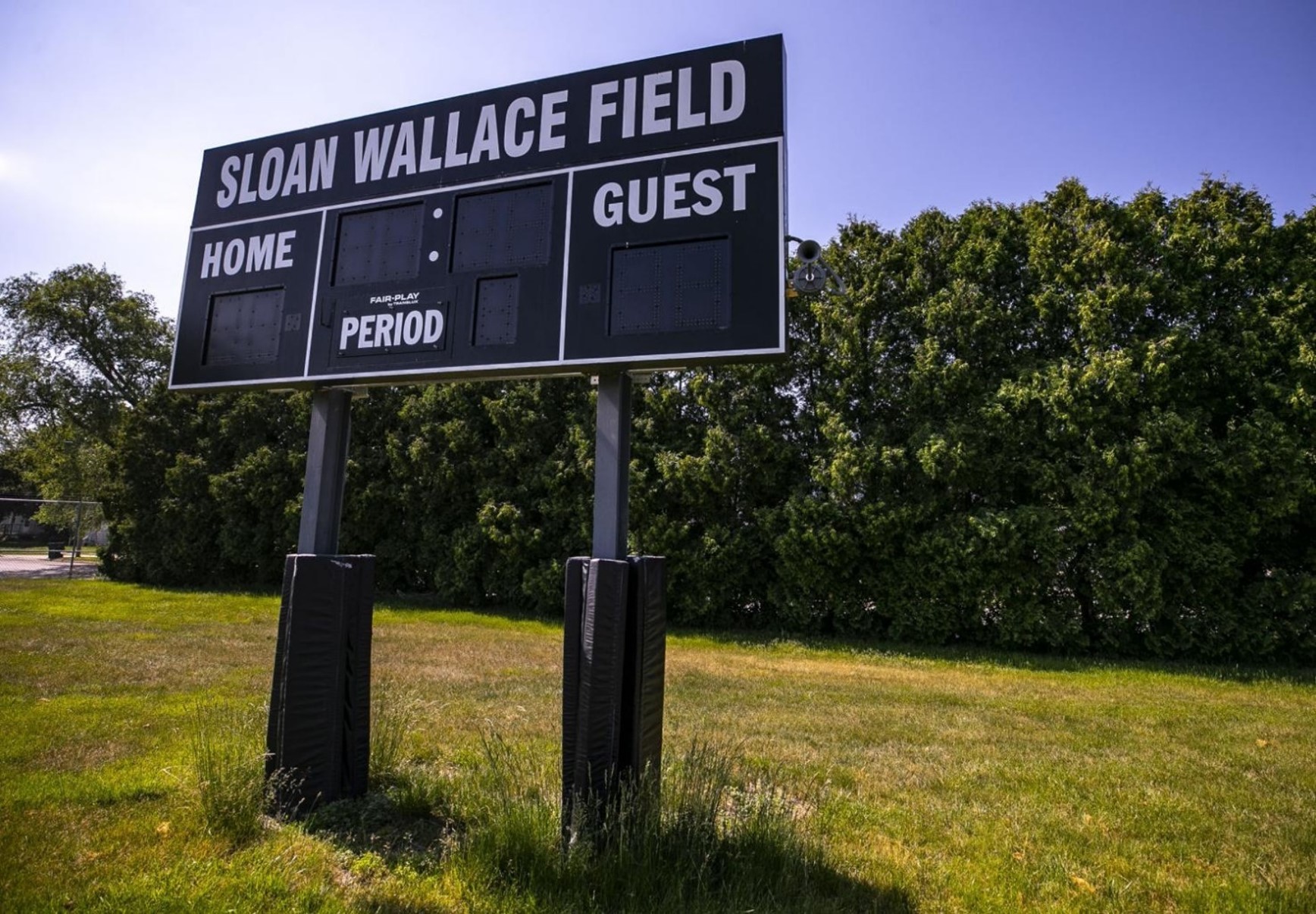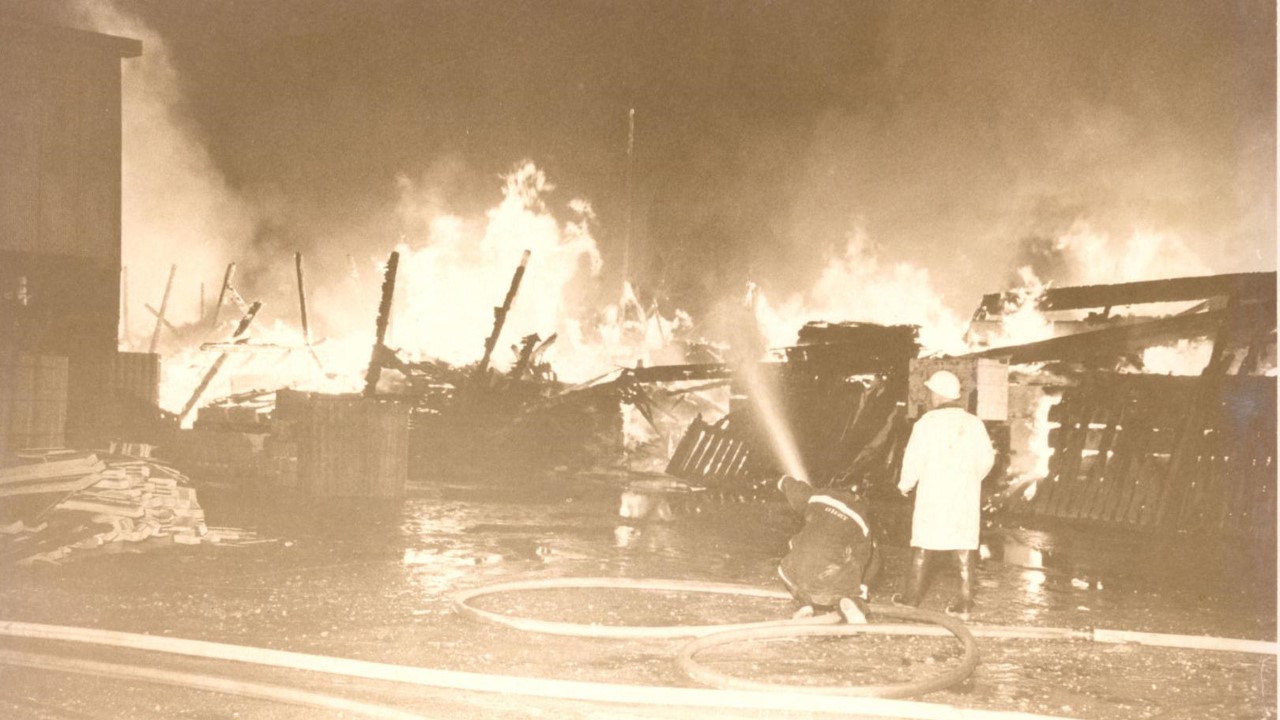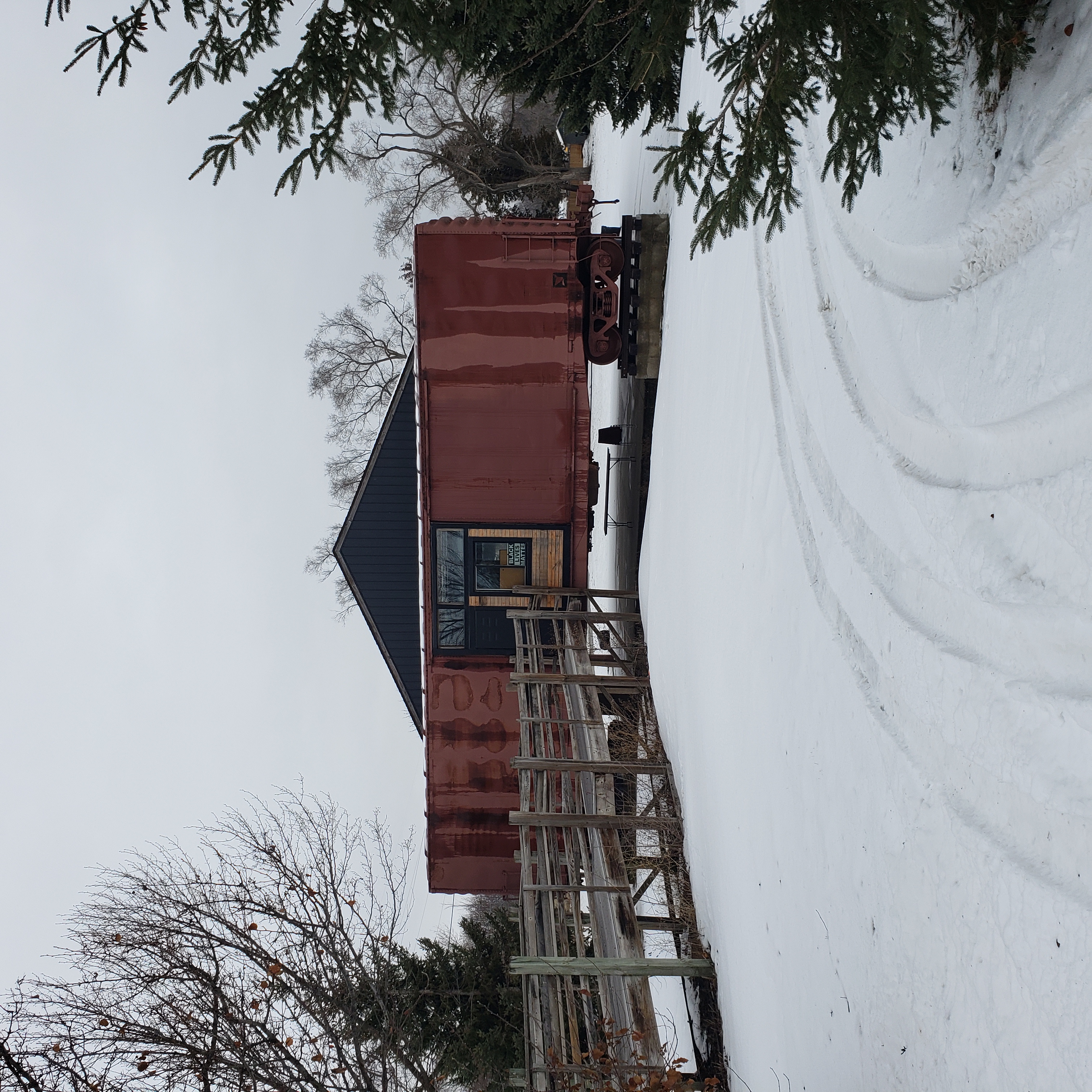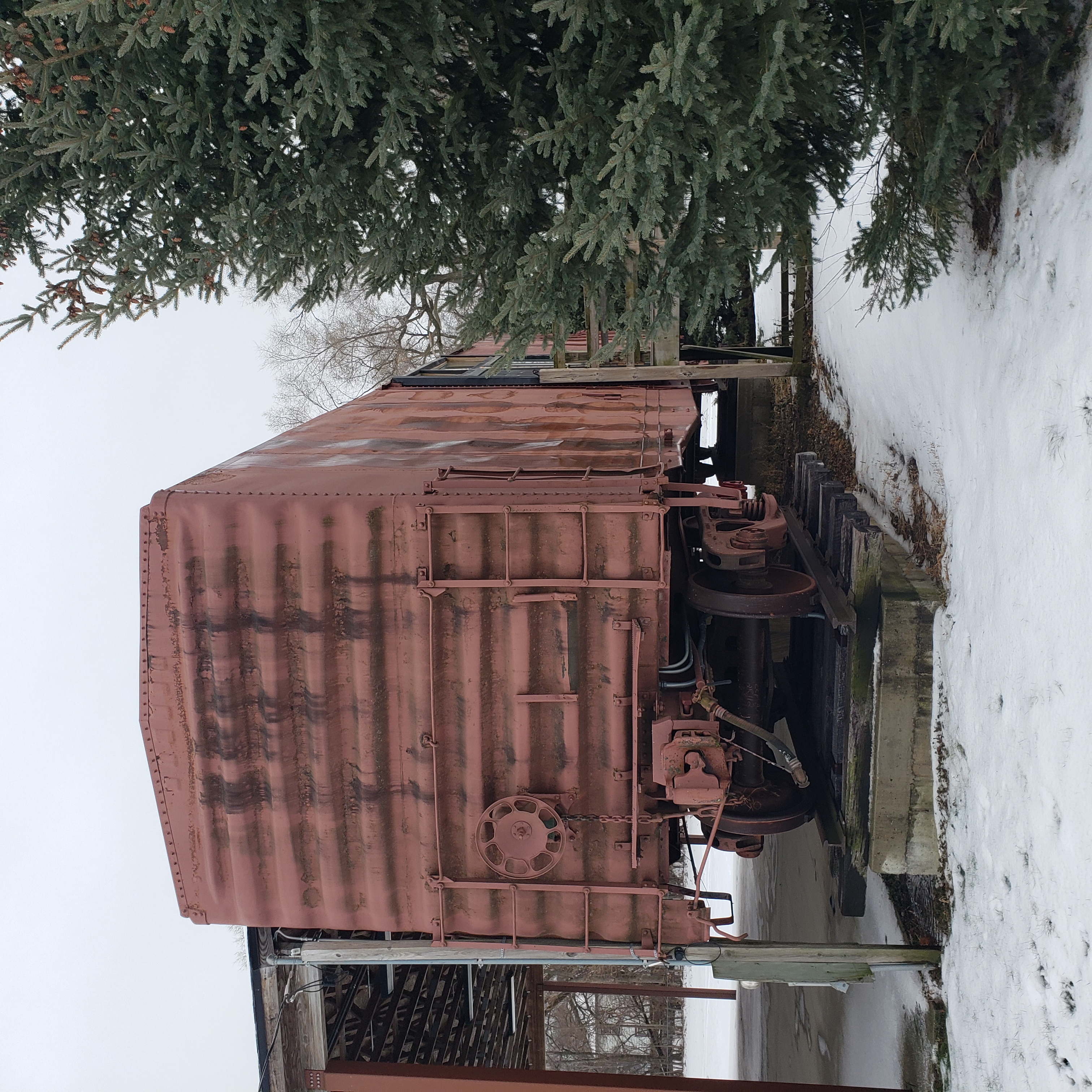In 2021 the Waterloo Region District School Board of Waterloo, Iowa voted unanimously to demolish the Sloane Wallace Stadium.1 The Stadium was neither a unique architectural marvel nor a great beauty, but it had historical and sentimental value. Serving as the football facilities for the West High Wahawks, the Central High Chargers, and the East High Trojans, the Stadium was constructed in 1922 and used until 1994, when the teams either disbanded or relocated their games to Memorial Stadium in nearby Cedar Falls.2 Bridging the east and west sides of the city, the historic site was located on 5th Street, adjacent to downtown Waterloo. By 2021, Sloane Wallace was no longer sound. The school board found it was more cost effective to raze the stadium rather than spend the estimated half a million dollars it would cost to repair, address the asbestos, and ultimately preserve the structure. Just one year shy of 100 years old, the structure was demolished to expand the nearby Irving Elementary School with a new playground area, green space, and parking lot.3

Conversations about how to memorialize the old stadium were prominent in public dialogue, from school board meetings to local publications. School board member Lyle Schmitt quoted in the Waterloo Cedar Falls Courier said, “I think the idea of memorializing as much as we can is ideal,” and suggested a walking track and interactive didactic panels that would tell the site’s history.4 The school board spoke of saving the scoreboard, which could be repurposed for a memorialization project that would preserve nostalgic tales of football victories and budding adolescence. The scoreboard is known for its misspelling of “Sloane” as “Sloan,” painted in big white letters. This accepted misinformation has since become an inside joke to the local community, contributing to the character of the stadium.5 Yet these public conversations neglected one of the most significant moments in the stadium’s history: a 1968 race riot that began at the gates of Sloane Wallace and ended with mass destruction of property, citywide curfews, and martial law. The demolition of the Sloane Wallace Stadium may seem harmless; however, it represents the continued destruction of local Black history within the city’s landscape.6 The 1968 riot represents the convergence of the prevailing issues of the twentieth century, perfectly demonstrating how history is made, blurred, and lost in a small American city.
Not Just a Football Game
On September 13, 1968, the East High Trojans played against St. Joseph High School of Westchester, Illinois. In attendance was 17-year-old James Murphy, who had a standing warrant for “malicious injury to a building.” Murphy had been accused of breaking a window at Renny’s Bar on August 22, 1968. There was another arrest involving a young man, possibly Terry “Goo Baby” Sallis, who was accused of carrying a concealed weapon—an accusation that to this day cannot be confirmed. These arrests are often confused as the same arrest. The most revealing source for first-person accounts of the day is a report from the Iowa Civil Rights Commission called “Crisis in Waterloo”, which includes a range of interviews that were collected after the riot.
Six police officers decided that halftime was the best time to arrest Murphy. One statement claims that Murphy was taken beyond the chain-link fence that surrounds Sloane Wallace and violently beaten. Another claims that Murphy was apprehended and violently beaten with clubs in front of the crowd. Yet another conflicting statement claims that Sallis and a few of his friends were yelling at the police, forcing them to respond with force at the sight of an alleged weapon. It is possible that all things occurred at once, or not at all. Suddenly 6 officers turned into 30, and the gates of the stadium were locked to keep everyone in. The police then began beating and using mace on any Black person in sight, men, women, and children. Black spectators had to escape by climbing over the fences of the stadium.

“The fire at Shepherd Lumber the night of the 1968 in Waterloo.” This reproduced image appeared in the article “This week marks 50 years since the 1968 riot in Waterloo. We look back,” by Thomas Nelson, published in the Waterloo-Cedar Falls Courier Sept 9, 2018. The original image appeared unattributed in the Waterloo Sunday Courier. Image provided by the author.
An account taken from Clarence Frazier, a local Black barber and volunteer at the game, states that the police may have been scared. Many were young and inexperienced, as these were third shift officers, and that shift was often given to the newest recruits. However, the account goes on to say that there wasn't a big crowd at the stadium. He asserts that “The police can distinguish between adults and children... they lost their composure and started using clubs.” Volunteers from an organization called the Citizens Patrol and the officers from the Human Rights Commission were able to calm things down so that the game could recommence. Murphy and Sallis were both arrested and survived the beatings from the police.7
There is discrepancy in retellings of what happened during the time between the police violence at the football game earlier in that day and the burning of the Shepherd Lumber Company later that night. In many official accounts of the riot, the harassment by the police ended on the grounds of the football stadium. However, there are accounts from several people who experienced or witnessed harassment after the game ended. Police allegedly left the stadium and began harassing Black people on and along East 4th Street. They were seen bursting into bars to club and mace Black people indiscriminately, including at Jimmie’s Lounge, where young and old Black people drank and shot pool. Enraged, a growing mob of predominantly young Black men trailed down East 4th Street from the redlined Black community toward downtown, breaking windows, throwing bottles, and starting small fires in several establishments, particularly those that refused to hire Black people. By midnight, 13 Black youth were arrested, 7 officers injured, and seventeen buildings on East 4th Street suffered vandalism. The destruction ended around midnight when Shepherds Lumber Company at 1162 East 4th Street was burned to the ground. In response, the mayor called in the National Guard.8
The Inciting Incident
The 1968 riot was not an isolated incident—nor was the football game its inciter.
Iowa has been a legislatively progressive state since its founding in 1846. However, Iowa often contradicts itself when it comes to race and class relations, failing to offer equal opportunity and protection to Black citizens. The history of the state is rife with the push and pull of movements for civil rights, unfortunately demonstrating the adage, “one step forward, two steps back.” These contradictions have marked the lives of Black citizens as well as the landscape, where the statistics uncovering long-standing employment, housing, and educational inequity become tangible. The events that led to the 1968 riot began shortly after the end of the Civil War, when large manufacturing companies began to employ recently emancipated Black people in northern factories. The Illinois Central Railroad Company (ICRR), also known as the Main Line of Mid-America, had primary routes connecting Chicago to New Orleans and Mobile. By 1867 they had extended their tracks into Iowa, creating major rail stations in cities such as Fort Dodge, Cherokee, and Waterloo.
Work on the railroads consisted of hard physical labor and little pay, even as the railroads became a highly lucrative and ever-expanding part of the United States economy. In 1911, the ICRR’s various shopmen’s unions united to call the strike now known as the Illinois Central Shopmen’s Strike, uniting almost exclusively White male workers from across the country. The strike is infamously understood as an immediate failure. Faced with the organized strike, the ICRR responded by hiring droves of new workers, including a significant number of Black workers from Holmes County, Mississippi. This enabled the railroad company to ignore the demands of its White workers and continue expansion across the United States.9 Unbeknownst to them, Black laborers were used as strikebreakers, positioning them in opposition to their White peers and adding to the already existing anxieties about new Southern migrants and deep-seated racial prejudice.
Furthering division, Black laborers refused to participate in such efforts as the Great Railroad Strike of 1922, otherwise known as the Railroad Shopmen’s Strike. The end of World War I resulted in expanded industrial demand and production. Former soldiers were hired as a new labor force, oversaturating many industries and resulting in the reduction of wages in the face of post-war inflation. This greatly impacted railway workers who were also dealing with the “open shop” movement, which enabled their employers to hire or offer contracts to nonunion labor. Unionized White workers who occupied positions such as machinists, boilermakers, sheet metal workers, and electricians attempted to convince the nonunion Black workers who held labor intensive and dangerous positions (hostler helpers, fire builders, and engine wipers) to strike alongside them. This caused further tension between the White and Black populations of Waterloo, and these tensions were only exacerbated by the Great Depression. The economic turmoil of the 1930s resulted in mass layoffs for Black workers, which shifted labor inequity from a hierarchy of positions to a division between the employed and unemployed.
Rath Meatpacking employed White and Black laborers and hired from an integrated labor union, offering White and Black workers the opportunity to unite. Rath was notorious for its cruelty toward all employees, often hiring from within the same families as a method of exerting control over its labor force. Rath hired Black men and women as early as 1910, dividing labor by gender. Black men were often relegated to the dirtiest jobs in the shackling pens, kill floor, and hide cellar, while Black women were hired only for custodial positions.10 In 1948, Iowa’s right-to-work law, which guaranteed workers the right to certain jobs despite their membership in a union, as well as the demand for higher wages due to post-war inflation, forced the unionized Rath employees to strike. Members of the racially integrated United Packinghouse Workers of America (UPWA) participated. Across the nation, more than 80,000 workers joined across 65 plants. After three long months, the tensions in Waterloo rose too high and dissolved the peaceful strike into a riot that damaged the packing plant, leaving one man dead and a woman injured. Governor Robert Blue called in the Iowa National Guard to end the riot and in a rare act of solidarity, both Black and White workers stood together against the occupying forces.11
Due to restrictive housing covenants, Black people could not rent, buy, or build homes where White people lived in Waterloo.12 Upon arrival, Black residents were immediately redlined, or limited to renting on the east side of the city, an area formally known as Smoky Row.13 At the turn of the century, Smoky Row was primarily populated by a few freestanding homes, saloons, and boarding houses. The local newspaper described the “dusky” section of the city as one rampant with crime, alcoholism, gambling, and prostitution. It was populated with homes most would consider unfit to live in.14 The major influx of Black workers required to keep up with labor demands led to a housing shortage for Black families. As a solution, ICRR offered free but severely inadequate housing, which consisted of discarded train box cars and makeshift “shanty” structures. In attempt to keep control over their new labor force, many workers were forced to settle between Merriman and Halstead Street, directly adjacent to the ICRR train yard.15
By 1950, a Black community was well established in Waterloo. Over time, the approximately 20 square blocks from Sumner to Mobile Street grew to be colloquially known as the African American Triangle. The triangle expanded as Black families were able to build their own homes, churches, and businesses. During World War II, a second influx of Black migrants nearly doubled the Black population between 1950 and 1960. News of jobs, educational opportunities, and the chance at a fresh start brought the extended families of earlier Southern migrants into Waterloo’s labor force. A report conducted by Iowa State Teachers College in 1955 (now the University of Northern Iowa) on “Negro-white relations” in Waterloo noted the heavy concentration of Black workers in manual labor: “A doctor, an osteopath, a dentist, a lawyer, and a public school teacher constitute the extent of Negroes that have been able to get into any business except several families who run small, ‘shack-like’ grocery stores in the Negro area.”16
By 1966, Waterloo was the fourth largest city in Iowa with a population of 74,023. Waterloo had the highest concentration of Black people of any city in the state and the second highest population of non-Whites in the state. As the east side developed, Black families became increasingly boxed in by the railroad, as the train tracks bordered the area on three sides, greatly limiting traffic flow from the Black residential and commercial properties to the rest of the city. Following the Federal Housing Act of 1949, Title I, the government funded “urban renewal” projects hit Waterloo between 1960 and 1972.17 Waterloo’s Urban Renewal Board proposed the first project in 1960, which involved the destruction of 103.5 acres on the east side’s Logan Avenue. The Logan Housing Project razed many of the early twentieth-century structures and displaced several Black and White families, further segregating the Black and White communities across the city. Reports revealed that “of the 220 families, 38 individuals, and 20 businesses relocated by the Logan Housing Project, approximately 75% were black.” By 1966, all but 12 Black people documented living in Waterloo, lived in East Waterloo.18
In addition to being isolated, the east side was overpoliced. Members of the Black community perpetually complained of police brutality, with several failed negotiations with city officials to be allowed police themselves. A pivotal moment in worsening race-relations in Waterloo involved the death of 23-year-old Eddie Sallis on May 31, 1966. Sallis and another young man named Howard Calvin Saunders were arrested on suspicion of breaking into the Hickory House restaurant. The following morning Sallis was found hanged in his jail cell by a noose made of his own trousers. The Iowa Commission for Civil Rights conducted a report that concluded that formal charges of police brutality could not be sustained from the evidence.19 The police claimed Sallis a suicide, the Black community called it a lynching.
The riot that followed was covered in the New York Times in an article that asked, “What are they doing rioting out there in the cornfields?”20 The article offered a very shallow window into the racial dynamics of the city, however it clearly revealed the generational divide between the first wave of Black migrants and their children. 16-year-old East High student Byron Washington was quoted, “The whites got to face it, man, this is a new generation. We aren’t going to stand for the stuff our mamas and fathers stood for.” Heavily influenced by the national civil rights movement and wider accessibility of technology, such as television and radio, the youth were increasingly unsatisfied with the status quo. Further, the custodial, mining, and pigpen-attending jobs, as well as the redlined housing and segregated schools of the previous generation were no longer satisfactory. The youth of Waterloo wanted more economic opportunities, education equality, and freedom from harassment.
Just two years after the 1966 local death of Sallis, 1968 was tumultuous with the assassination of Dr. Martin Luther King Jr. in April, the raging Vietnam War, the spreading ideologies of the Black Power movement, and continued police brutality against Black youth.21 Black East High School students responded, led by Terri Pearson and her younger sister Kathy, by presenting a list of demands to the Waterloo School Board. The students demanded the integration of all social studies curriculum to include Black history and perspectives, the hiring of more Black teachers and counselors, prohibiting White teachers discouraging Black students to go to college, the establishment of a Black student union, and the removal of police from school property.22 Shrugged off by the school administration, the students organized a series of protest actions against the administration involving walk outs, sit-ins, and demands for community meetings. As pressure continued to build, faculty and administrators refused to meet with students.
On September 9, 1968, a collective of students and community activists then occupied the high school gymnasium demanding a meeting. Protesting students were met with tyrannical punishment, including suspension, probation, and expulsion. Terri Pearson was eventually expelled, and students staged a walk out on September 11, 1968, in solidarity. Parents became involved and organized several community meetings at local churches and the Jesse Cosby Neighborhood Center, ultimately coming together to support their children. On September 12, 1968, a united Black community met with the school board with an extended list of 12 grievances.23 The tensions were so high that the State Attorney General Richard C. Turner and the Iowa Civil Rights Commission suggested that the upcoming football game be canceled, a request that the high school’s principal Lawrence Garlock refused.
A Boxcar on East 4th Street
Today, Waterloo remains plagued by systemic inequity. In addition to prevailing housing shortages, low wages, unemployment, and the negative effects of reverse migrations, the current population of Waterloo is 67,314, with 17.4 % consisting of Black people.24 The 1968 riot represents a convergence of the systemic violence that Waterloo’s Black citizens experienced over the course of a century and had a major physical impact on the landscape. In the wake of the riot many White-owned businesses left their east side commercial lots to rebuild in other parts of the city. Many of these businesses became vacant lots and have remained so to this day. The former site of Shepherds Lumber Company, a lot just southwest of the segregating railroad tracks, remains undeveloped.

The Boxcar on East 4th Street, Photo: TK Smith, 2022/23. Image provided by the author.
Should one survey the landscape of Waterloo for Black historical markers, they will be confronted with lack. The critical need to memorialize the riot is exacerbated by another prominent marker, a rusty red boxcar on East 4th Street. It is parked across the street from the Sullivan Memorial Park, a greenspace that was once part of Smoky Row. It was initially brought to Waterloo as a beacon for the future African American History and Culture Museum (AAHCM), which was an idea proposed by a committee of devoted Waterloo citizens with high aspirations in the early 1990s. Their mission was “to promote greater knowledge of the African American community in the Cedar Valley through the collection, preservation, and interpretation of the historical past.”25 The boxcar, a harkening back to the early dwellings of Waterloo’s Black citizens, was donated from the Canadian National Rail Yard to the proposed site of the museum on East 4th and Adams Street as part of a permanent exhibit at the proposed museum.26

Detail of the Boxcar on East 4th Street, Photo: TK Smith, 2022/23. Image provided by the author.
The African American History and Culture Museum never materialized, as the necessary resources and support never appeared. Discarded, the boxcar now exists as a monument by default, a historical marker out of context.27 Much like the Sloane Wallace scoreboard, it is relevant to Black history. But like a red herring, it miscommunicates information and lacks purpose beyond the creation of confusion. The boxcar once represented opportunity for recently emancipated Black people; but now, it embodies the structural racism that continues to plague Black families and the greater failures of Waterloo to preserve, teach, and celebrate Black histories. Thoughtful memorialization of the Sloane Wallace Stadium is made more critical in this current social and political climate where critical race theory, Black cultural studies, and American history is being stripped from public school curricula in favor of nationalist propaganda. Even more still, as the generation that lived through the riots of the 1960s dies without their stories being heard. This gaping lack of history found on the landscape, in the archive, in lesson plans, makes evident the ever-present danger for Black people…forgetting, not only what they have done to us, but what we, as a community, have done for each other.
